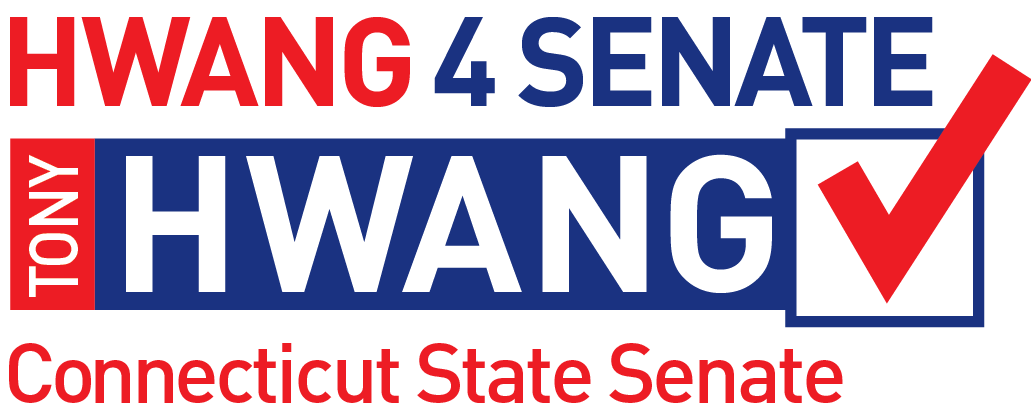|
Governor Lamont Announces Connecticut Residents Over 65 Can Register for COVID-19 Vaccination Appointments Starting Thursday, February 11
Governor Ned Lamont announced that Connecticut residents over the age of 65 will be eligible to schedule COVID-19 vaccination appointments starting on Thursday, February 11, 2021, as the state rolls into the next part of phase 1b of its vaccination program. Vaccinations for individuals over the age of 75 and those within phase 1a will continue.
With approximately 350,000 individuals in Connecticut between the ages of 65 and 74, and a slightly increased but relatively small weekly supply of the vaccine being received in the state from the federal government, Governor Lamont and state public health officials are stressing the need for patience on the part of Connecticut residents.
Currently, the state anticipates receiving about 60,000 first doses of the vaccine per week from the federal government.
All eligible residents are required to make an appointment in advance of receiving the vaccine. To find available vaccination clinics throughout the state, residents can visit ct.gov/covidvaccine and enter their zip code.
Appointments can be made utilizing the following tools:
- VAMS online system: VAMS is the Vaccine Administration Management System and can be used to schedule appointments at multiple clinics across the state. To make an appointment using this system, click here.
- Call Connecticut’s COVID-19 Vaccine Appointment Assist Line: Connecticut’s COVID-19 vaccine appointment assist line is open from 8:00 a.m. to 8:00 p.m., seven days a week. To make an appointment, call 877-918-2224.
- Hartford HealthCare: Hartford HealthCare has multiple locations throughout the state, including large clinics in the Hartford area. To make an appointment using this system, click here.
- Yale New Haven Health: Yale New Haven Hospital has multiple locations throughout the state, including large clinics in the New Haven area. To make an appointment using this system, click here.
- Stamford Health: Stamford Health is operating a clinic seven days per week at Stamford Hospital. To make an appointment using this system, click here.
- Walgreens: Walgreens is currently offering the vaccine at 12 different locations and will soon be adding many more across the state. To make an appointment using this system, click here.
- CVS: CVS is currently offering the vaccine in four locations (Colchester, Putnam, Waterford, and Windsor Locks) and will be expanding to 12 more locations in the next week. To make an appointment using this system, click here.
- Walmart: Walmart will be offering the vaccine at seven locations across the state (Hartford, New Haven, North Windham, Norwalk, Torrington, Waterbury, and West Haven). To make an appointment using this system, click here.
For the most up-to-date information on COVID-19 vaccination distribution plans in Connecticut, visit ct.gov/covidvaccine.
Data updates on vaccine administration in Connecticut
The following data represents the total number of COVID-19 vaccinations administered in Connecticut, as reported to the state as of today:
- First doses administered: 387,174
- Second doses administered: 129,907
- Total doses administered: 517,081
So far, the state has vaccinated 56 percent of its population over the age of 75. Connecticut remains in the top four states in the nation for vaccine distribution.
Connecticut is currently in phase 1b of its COVID-19 vaccination program. Right now under this phase, individuals over the age of 75 can receive the vaccine. Beginning Thursday, February 11, this phase will expand to include individuals between the ages of 65 and 74. Soon, the phase will become open to include individuals between the ages of 16 and 64 who have underlying health conditions, and frontline essential workers.
Information on Connecticut’s COVID-19 vaccination program is available at ct.gov/covidvaccine.
Governor Lamont signs 90th executive order to mitigate the spread of COVID-19
Governor Lamont today signed another executive order – the 90th since he enacted the emergency declarations – that builds upon his efforts to encourage mitigation strategies that slow down transmission of the virus. Executive Order No. 10A enacts the following provisions:
- Extension of COVID-19 executive orders: Extends the duration of nearly all the COVID-19 executive orders that are currently in effect through April 19, 2021. Certain orders related to immunity from liability for healthcare facilities and suspension of certain operations of the Judicial Branch will remain in effect until March 1, 2021.
| **Download: Governor Lamont’s Executive Order No. 10A |
Data on COVID-19 vaccine administration by race and ethnicity released
The Connecticut Department of Public Health today released data showing how vaccines in Connecticut have been administered throughout the state across race and ethnicity as of February 3. The data, while limited, mirrors what states across the country have seen: that disparities exist in vaccine administration across racial lines, with Black populations lagging behind White and Hispanic populations.
The department cautioned that the data should be interpreted with several caveats:
- While reporting of race/ethnicity is required for all vaccine providers, there are some gaps, which is the case across all vaccines and not unique to COVID-19 vaccines
- Providers and individuals have the option of selecting “other,” “multiple races,” or “not reported,” which makes analysis and comparisons across races difficult
- Providers use multiple means to report data to the state, which then must be aggregated and analyzed, which can lead to missing or under-reported data
The department also noted that data quality issues are not unique to Connecticut and are being seen across the country. Recently, the Centers for Disease Control and Prevention (CDC) noted that 50 percent of the data reported by vaccine providers across the country did not contain race/ethnicity data.
Despite these limitations, Acting Public Health Commissioner Dr. Deidre Gifford noted that the data does suggest that disparities exist in the administration of vaccines to historically underserved communities, particularly Black populations.
“As we open up the vaccine program to individuals 65 and over, we are redoubling our efforts to ensure that vaccine is reaching the communities and populations who have been disproportionately impacted by COVID-19,” Commissioner Gifford said. “We are re-allocating additional vaccine to communities with large minority populations, encouraging our vaccine providers to conduct outreach and implement other measures to ensure that individuals from underserved communities have equitable access to vaccinations.”
Commissioner Gifford pointed to several other steps being taken to address disparities in vaccine administration, including:
- Ensuring adequate vaccine supply. Underserved cities and towns are home to 60 percent of Connecticut’s population, and the Department of Public Health is allocating vaccine to ensure there is no shortage of doses.
- Targeting an additional roughly 10 percent of the state’s allocation to go to what are known as “high SVI towns” for use at clinics targeted for senior housing, congregate settings, and other locations with populations that might not have easy access to the vaccine:
- Those towns/cities are identified using the CDC’s social vulnerability index (SVI), which seeks to identify municipalities where a number of factors, including poverty, lack of access to transportation, and crowded housing may weaken a community’s ability to respond to a public health crisis, like a pandemic.
- Launching 60 pharmacy locations this week:
- Two-thirds are in high SVI towns
- One-third are in rural, underserved communities
- Establishing Connecticut’s Vaccine Appointment Assist Line (877-918-2224) to broaden access to residents without internet access or who have technology issues, and for non-English speaking residents.
- Deploying community outreach specialists – bilingual, with existing relationships in local communities – to serve as vaccine ambassadors.
- Launching a trusted messenger Train the Trainer Program for community leaders, starting with outreach to underserved communities.
- Supporting a multi-lingual education and social media campaign to boost vaccine confidence (communication materials are translated into Spanish, Portuguese, Polish, and Haitian Creole, and other languages on request)
Due to a constrained supply that limits the number of vaccines administered weekly, combined with the relatively unreliable nature of the race/ethnicity data, the Department of Public Health does not have plans at this time for a regular release of this data. In the coming weeks, as the number of individuals receiving their first dose of the vaccine becomes more robust and data reporting more reliable, the department will announce a regular schedule for the release of the race/ethnicity data.
| **Download: Data on first dose of COVID-19 vaccine by race and ethnicity as of February 3, 2021 |
Additional SNAP benefits coming February 18 to 117,000 Connecticut households
The Connecticut Department of Social Services today announced that it will provide $19 million in Emergency Supplemental Nutrition Assistance (SNAP) benefits to more than half of Connecticut’s SNAP-eligible households on Thursday, February 18. The benefits add to the more than $197.4 million in emergency benefits that have been disbursed since the start of the pandemic ten months ago.
Authorized by the federal Families First Coronavirus Response Act of 2020, the extra food benefits will go to approximately 117,000 households that are not currently receiving the maximum benefits allowed for their household size. This means that all households enrolled in SNAP will receive the maximum food benefit allowable for their household size, even if they are not usually eligible for the maximum benefit.
Specifically:
- Approximately 117,000 of 215,623 SNAP-participating households statewide will receive the emergency benefits in February.
- With this additional $19 million allocation by the U.S. Department of Agriculture’s Food and Nutrition Service, emergency benefits are totaling over $216.4 million in additional SNAP assistance statewide during April, May, June, July, August, September, October, November, December 2020; and January and February 2021, with commensurate spending in the food economy.
- The average emergency benefit amount a household will see on its electronic benefits transfer (EBT) card on February 18 is $155.77.
- All participating households also received their normal SNAP benefits, including the previously announced 15 percent increase from the Consolidated Appropriations Act of 2021 on the first three days of each month they normally do, according to last name.
- If a household is granted regular SNAP benefits on or after February 18 and is also eligible for the emergency supplemental benefits, the latter benefits will be added to the EBT card on a Friday, depending on the date of granting.
- As outlined in President Biden’s January 22, 2021, executive order, the USDA is considering new guidance that would allow states to increase SNAP emergency benefit allocations for those households currently not eligible to receive it. Until this guidance is received, the state is only able to provide emergency benefits to those households not currently receiving the maximum benefit for their household size.
Emergency benefits allowed the household’s SNAP benefit to increase to the maximum allotment for a household of that size as follows:
| Household Size | Maximum Benefit Amount |
| 1 | $234 |
| 2 | $430 |
| 3 | $616 |
| 4 | $782 |
| 5 | $929 |
| 6 | $1,114 |
| 7 | $1,232 |
| 8 | $1,408 |
For each additional person, add $176.
For example, if a household of two normally received $330 of SNAP benefits in February, $100 would bring this household up to the maximum benefit for its size. This household will receive a $100 emergency benefit on February 18.
For additional information about SNAP, visit www.ct.gov/SNAP.
The post Covid-19 Update – February 12, 2021 appeared first on Connecticut Senate Republicans.

